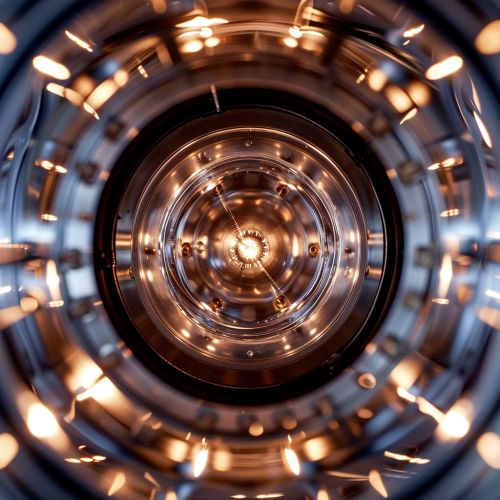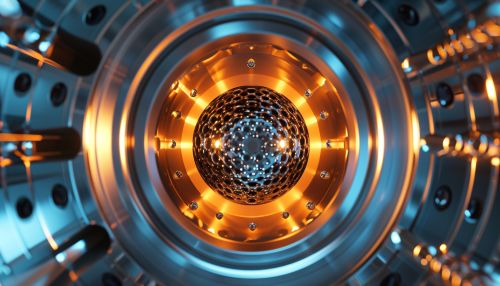Magnetron
Introduction
The Magnetron is a high-powered vacuum tube that generates microwaves using the interaction of a stream of electrons with a magnetic field. The magnetron is the heart of a microwave oven where it produces the microwaves that cook the food.
History
The magnetron was invented in the early 20th century by Albert Hull at General Electric in an attempt to overcome the limitations of conventional vacuum tubes in the transmission of high frequency radio waves. However, the initial design was not efficient and it was not until the 1940s that the cavity magnetron was developed by John Randall and Harry Boot at the University of Birmingham, England. This design was far more efficient and powerful, and it was quickly adopted for use in radar systems during World War II.
Design and Operation
A magnetron consists of a hot cathode (filament), an anode (plate), a control grid, and a permanent magnet. The cathode and anode are enclosed in a vacuum tube, while the control grid and magnet are external. When a high voltage is applied to the cathode and anode, it causes the electrons to be stripped from the cathode and move towards the anode. However, the magnetic field causes the electrons to spiral outward in a circular path rather than moving straight to the anode. This spiraling motion causes the electrons to pass through the cavities of the anode, causing them to resonate and produce microwaves.
Types of Magnetrons
There are two main types of magnetrons: the cavity magnetron and the traveling-wave tube (TWT) magnetron. The cavity magnetron is the most common type and it is used in microwave ovens, radar systems, and some medical equipment. The TWT magnetron is used in satellite communication systems and other high-power, high-frequency applications.
Applications
The primary use of magnetrons is in the generation of microwaves for heating in microwave ovens and in radar systems for detection and navigation. However, they are also used in some medical equipment for cancer treatment and in industrial processes for drying and curing materials.
See Also


